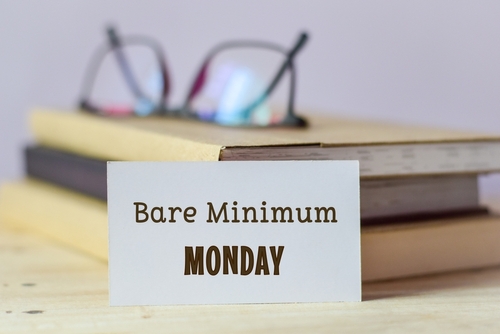“Bare Minimum Mondays” (BMM) is the latest workplace trend to describe declining employee productivity. The fad sweeping workplaces was coined by Maris Jo, a TikTok content creator, who says the idea is to ease into the work week by prioritizing self-care over productivity on Mondays.
Bare Minimum Mondays is also linked to the “Sunday Scaries,” the anxiety felt toward the coming workweek. According to LinkedIn research, this affects 80% of professionals, including more than 90% of Generation Z and Millennials. Furthermore, nearly one in two (47%) senior managers report experiencing the “Sunday Scaries” multiple times during the past year, per Ciphr.
Karen Siegel, HR and Business Development Manager at Delta Hire – a workforce development and recruiting firm – says BMM is not only another nod to the 4-day workweek, but also a reason why companies are leaning toward a shorter, more productive workweek.
We recently tapped Karen to gauge further insights into how BMM is different than other trends, whether the onus is on the employer or employee, as well as what actions employers can take to combat the phenomenon.
Here’s what she had to say.
How is BMM different than other trends, like “quiet quitting”?
KS: Employee-burnout buzzwords like “Quiet Quitting” and “Great Resignation” have knowingly frustrated employees and employers over the last few years, prompting more people to question work as a priority above mental, financial and physical health. The idea is similar to “quiet quitting,” as many silently retreat to tackle only the minimal tasks at hand, however, BMM places an emphasis on this as an idea to set the rest of the workweek up for prime productivity.
Another trend for addressing productivity comes to mind: the 4-day workweek. Rather than dictating when to be productive, more companies are leaning toward shorter workweeks to boost engagement. The latest study – and one of the largest trial runs to happen in recent history – found 90% of companies surveyed reported major reductions in turnover and absenteeism as the result of providing one paid day off a week. It’s becoming more apparent employees’ motivation and engagement is positively impacted when they can expect shorter, 4- and 4.5-day workweeks. The benefits of this trend are increasingly growing, whereas the benefits of BMM, or aiming to reach the bare minimum one day a week, are not yet clear.
Is the responsibility of this emerging movement on the employer, employee, or both? Why?
KS: The root of BMM stems from burnout and the effects of the 40-hour-plus workweek. Contrary to the hype behind “the daily grind,” many studies reveal various health concerns with sitting at a desk eight hours a day, five days a week, with one study going as far as comparing it to the negative impacts of smoking. While societal expectations, employers and employees have all contributed to this trend of disengagement, the BMM movement itself represents a changing relationship between companies and its workforce. The biggest precursor to BMM may come from employers and outdated societal expectations, but employees also play a role.
Should employers and HR leaders worry about this trend and how can they address the heart of the issue?
KS: The sentiment behind the new buzzworthy phrase should be the main concern – not the meaning itself – as trends are identifying gaps in employee engagement and talent retention. When engagement and retention are jeopardized, companies face bigger issues like declining productivity and rising costs of attracting, onboarding and training new staff.
Employers must fully understand the issue before they can address it. Survey the staff to get a pulse on their top priorities, burnout and engagement levels, preferred working schedules and flexibility policies, as well as their opinions of these growing workplace trends.
Then analyze the company’s operations. Is it possible to consider a 4-day workweek, summer Fridays or flex hours? If people adopt the BMM mindset, does it pose an actual threat to the business or impact employee wellness and development? Answering similar questions after analyzing the data will help HR and business leaders develop clear next steps while working with employees to make a more productive work environment.
What are some initiatives that can be implemented immediately?
KS: As the demand for shorter, more productive workweeks grows louder and harder to ignore, some companies are piloting initiatives like the 4-day workweek, half days, capped weekly and overtime hours, as well as encouraging “no meeting Fridays” and providing resources to boost productivity – like standing desks and meditation passes.
Bare Minimum Mondays won’t be the last workplace trend or burnout buzzword to come. The companies that implement communication strategies around the latest work movement will be the ones to succeed. Once leaders communicate and identify where employees stand, a world of options for curbing, adopting or embracing these trends becomes available, enabling a better workplace for all.

